Mark Anthony Neal's Blog, page 301
August 10, 2020
'Everybody Deserves To Be Seen As A Hero,' Says 'Old Guard' Director Gina Prince-Bythewood
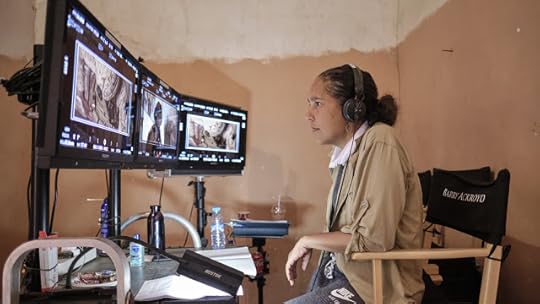
'"Female characters are not [usually] the center of the story," filmmaker Gina Prince-Bythewood says. Her new movie, Old Guard, follows a diverse group of world-weary warriors who've been alive for centuries.' -- Fresh Air
Published on August 10, 2020 17:04
August 9, 2020
LaKeith Stanfield on Retelling the Story of Black Panther Leader Fred Hampton
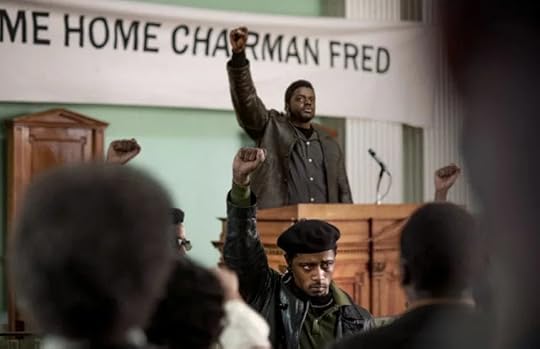
‘It was one of the hardest roles I’ve ever had to do.’ — Actor LaKeith Stanfield opened up about his role in Judas and the Black Messiah, the upcoming, biopic about Black Panther leader Fred Hampton.' -- NowThis Entertainment
Published on August 09, 2020 11:05
The Right to Rock (for the late Benjamin James Moore)
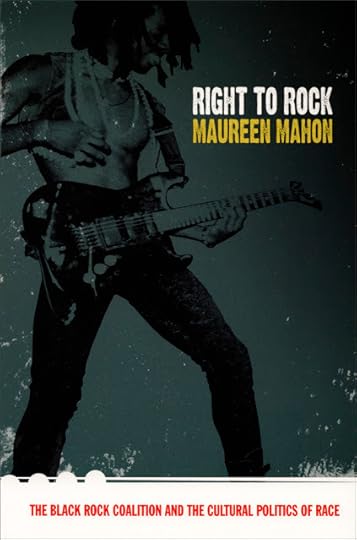
The Right to Rock (for the late Benjamin James Moore)by Mark Anthony Neal | @NewBlackMan | NewBlackMan (in Exile)
“Rock & Roll is Black music and we are its heirs”—Black Rock Coalition Manifesto
To celebrate the 50th anniversary of Rock & Roll in 2004, the Miller Brewing Company, in conjunction with Rolling Stone Magazine, issued 10 commemorative cans depicting the greats of Rock & Roll. Despite the fact that Black musicians were critical to the development of Rock & Roll, none of the cans featured a Black artist, though two of cans featured “guitars.”
In the introduction of Rip It Up: The Black Experience in Rock & Roll, Kandia Crazy Horse notes that “thirty-years after the death of Jimi Hendrix, perhaps the greatest ever guitar revolutionary this planet will see, the notion of a ‘Black’ guitar hero is still inconceivable to many—or at least to record executives and other power players in the rock biz.” (xv) Ms. Crazy Horse’s comments speak profoundly to the “little black box” in which Black artists and Black culture have been forced to play out their artistic fantasies. Greg Tate, Konda Mason and Vernon Reid were very aware of the constrictions placed on Black musicians when they ventured forward in 1985 and founded the Black Rock Coalition (BRC). Their struggles and triumphs are chronicled in Maureen Mahon’s important, Right to Rock: The Black Rock Coalition and the Cultural Politics of Race (Duke University Press).
For far too many people the idea of Black Rock rarely ventures past the image of Jimi Hendrix (even if Miller Brewing failed to acknowledge him) and even then, still far too many people will debate as to whether Hendrix music was indeed “Black” at all. But the Black Rock tradition looms large—Chuck Berry, Little Richard, Ike and Tina Turner, Joyce Kennedy and Mother’s Finest, Nona Hendrix, Bad Brains, 24-7 Spyz, Living Color, Lenny Kravitz, The Family Stand, Sly and the Family Stone, Funkadelic, Meshell NdegeOcello, the Isley Brothers (a long, long time before we had to deal with Mr. Biggs), Prince and of course the formidable institution that is the Black Rock Coalition (BRC).
For those Afro-topian essentialist who can’t feel Blackness unless it’s syncopated and has blue notes, the Black Rock tradition has allowed many artists to imagine the worlds we’ve yet to inherit—call it Afro-futurism, Post-Blackness or just some third-eye funk. According to Mahon, she wrote Right to Rock “because the aesthetics and politics informing ‘black rock,’ the concept that BRC members champion, underscore the need to expand our views and representations of African American music, people and culture to include a much more complex and compelling set of possibilities.” (21)
The conventional wisdom, both among many Black Americans and others is that any Black person who listens to or even dares to play so-called “Rock” music was so how out of sync with their blackness. As Mahon describes it, “an interest in rock music marks an African American as someone who has either misunderstood which music is appropriate for his or her consumption or has abandoned black culture by investing in what is perceived as a white music form.” (9-10) It was this very narrow thinking about race and cultural production that the BRC sought to openly challenge. According to Mahon, the BRC “embodied the diversity of African Americans usually absent from the onslaught of media representations and academic discussions that so often highlight the distressed poor, the drug addled, the violent, the highly sexed, the long-suffering, the religiously devout, the good-time partyers, and, occasionally thrown in for variety, the middle-class professional.” (8) If there is something to be said about a Black Rock tradition, it’s that Black Rock has consistently imploded every little box built to contain it.
What distinguished the Black Rock Coalition from their rocker forbearers was their implicit understanding of the need to organize. Founding member Greg Tate, a longtime critic for the Village Voice, recalls “What started out as a bitching session, really became more about a proactive and developmental approach to the issue, which was, instead of talking about how we’re locked out of the Master’s house, why don’t we just build our own.” (1) As Mahon adds, “BRC members couldn’t simply play their music. They had to organize a social movement so they could do so.” (9) The centerpiece of BRC’s early activities was getting “Vernon’s thing”—the band Living Color—signed to a major label. That Mick Jagger (who my man Bob Davis would call a culture bandit) was hugely influential in getting the band signed to the Epic label, caused a great deal of stress among BRC’s membership. Mahon notes that BRC member’s were most disturbed that a “White star had to validate a black band before it could gain recognition.”
With the release of Vivid (1988) and the MTV sanctioned video for “Cult of Personality”, Living Color became both a novelty (really a fetish) and the best known “Black” Rock act since Hendrix. The group garnered Grammy Awards in 1989 and 1990 for “Best Hard Rock Performance”. Though Vivid went double platinum, Living Color witnessed very little support from so-called Black radio. The best example of this disconnect was the failure of New York radio stations to program a song like “Funny Vibe”(featuring cameos from Chuck D and Flava Flav of Public Enemy), which explicitly critiqued racial profiling and police brutality. This of course is in an era when the murders of Michael Stewart, Michael Griffiths, Eleanor Bumphers and Yusef Hawkins by “citizens” and law enforcement officers were front page fodder in New York City.
In the context of Living Color’s success many other Black Rock acts emerged, including The Family Stand, Meshell NdegeOcello (both BRC alums), Lenny Kravitz, Dionne Farris (the former Arrested Development vocalist, whose 1994 recording Wild Seed, Wild Flower was virtually ignored by BET), Ben Harper, and in the early 2000s hybrid artists like Res and Van Hunt. The landscape that the Black Rock Coalition helped create is embodied in a group like Shelly Nicole’s blaKbushe. On her recording she who bleeds… (2003) Nicole creates a vibrant synthesis of Rock and Jazz, which ultimately aims to tweak the staid sensibilities of both mainstream America and the gatekeepers of African-American culture and identity. Nicole is deadly serious on a track like “America’s Secret” which discusses issues like the Columbine shootings and sharply witty on a track like “No Lye” which gets at the politics of black hair.
Though she who bleeds… existed below the radar of the mainstream it is a realization of what the Black Rock Coalition hoped to achieve from the beginning, which according to Mahon, is “Our right to rock, our right to create. The opportunity to make our freak flag fly.” (256)
***
Originally Published in August of 2004 for AOL Black Voices
Published on August 09, 2020 10:57
August 8, 2020
Hazel Scott As Herself
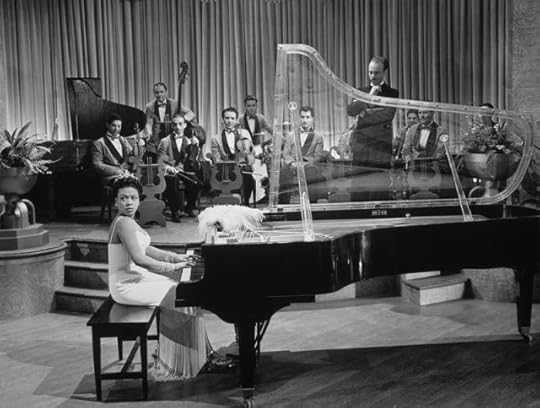
'Pianist and singer Hazel Scott was born in Trinidad a century ago, in the summer of 1920. Scott is well-remembered for her sparkling piano technique, as well as her style - but her biography reveals a powerful character with a rich and layered life behind the glamour.' -- Fishko Files.
Published on August 08, 2020 15:53
Why Are So Many Golden Age Rappers Dying Young?
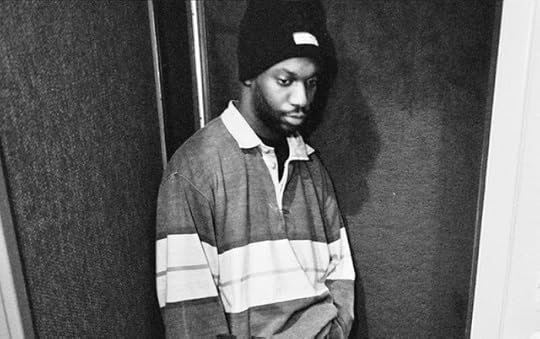
'Recently, we mourned the loss of Malik Abdul Basit, better known as Malik B, a hip hop artist and one the founding members of the legendary group, The Roots. He was only 47. The exact cause of Malik’s death has yet to be confirmed, but it fits into a troubling pattern of rappers, especially those from the golden age of hip-hop's early days, dying young from illness. Eazy-E, from N.W.A, died from complications with AIDS at 30; J Dilla died from a heart attack at 32; Prodigy, half of the group Mobb Deep, died from choking and complications with sickle cell anemia at 45; Phife Dawg, from A Tribe Called Quest, died from complications with diabetes at 45; and the list goes on. Dart Adams, a hip-hop journalist and historian, joined The Takeaway to help us understand why so many rappers are dying young and what can be done about it.'
Published on August 08, 2020 15:45
The Quarantine Tapes: Robin Kelley
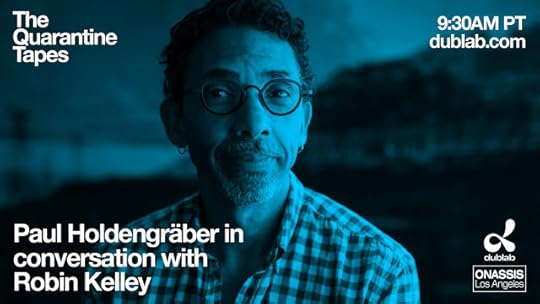
'On episode 091 of the Quarantine Tapes, Paul Holdengräber is joined by Robin Kelley. As a historian, Robin provides a long view of the ongoing crises in the US, talking with Paul about how to slow down in this moment and the importance of keeping the big picture in mind. They talk in-depth about issues of racial capitalism, environmental justice, and a culture of care. In their discussion, Paul and Robin call out influences like Thelonious Monk and Cedric Robinson and take time to hear about the three words that guide Robin’s approach to his work: love, study, struggle.'
Published on August 08, 2020 15:37
August 7, 2020
Terrace Martin | Racism on Trial | Third Movement | Pig Feet LIVE ft. Denzel Curry, Daylyt, G Perico
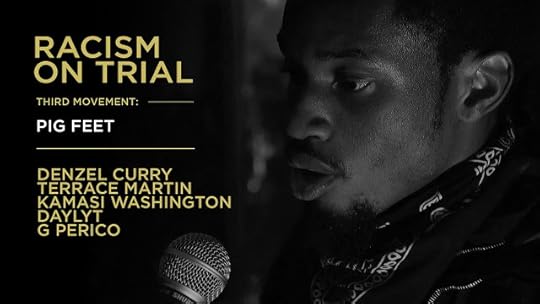
This is the Third Movement of Racism on Trial by Terrace Martin, Denzel Curry and Kamasi Washington. The Day the N*ggaz Took Over. Performed live at Black Power Live.
Published on August 07, 2020 15:54
Terrace Martin ft. Alex Isley, Robert Glasper, Kamasi Washington | Racism on Trial | Any Day Could Be Our Last | Second Movement
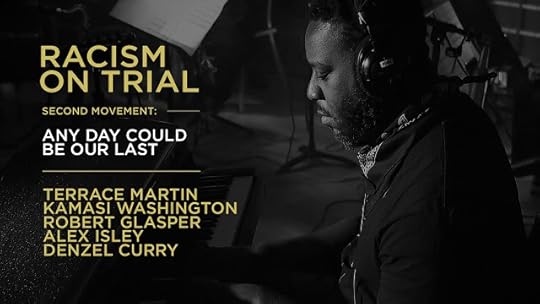
'This is the Second Movement of Terrace Martin's Racism on Trial.Written for and performed live at Black Power Live.'
Published on August 07, 2020 15:49
Kamasi Washington & Terrace Martin | Racism on Trial | Final Thoughts and Change of the Guards | First Movement Pt 1
Published on August 07, 2020 15:43
Terrace Martin | Racism on Trial (Ft. Denzel Curry) | The Voice of King Nipsey | First Movement Pt 1
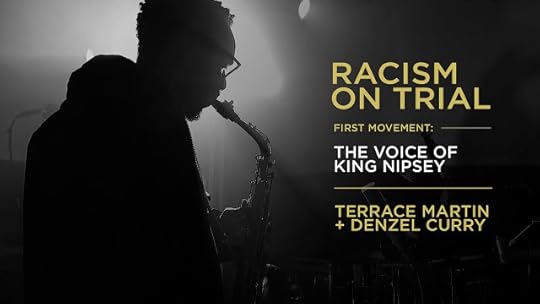
'This is the First Movement of Terrace Martin's Racism on Trial. Written for and performed live at Black Power Live.' -- Jammcard
Published on August 07, 2020 15:38
Mark Anthony Neal's Blog
- Mark Anthony Neal's profile
- 30 followers
Mark Anthony Neal isn't a Goodreads Author
(yet),
but they
do have a blog,
so here are some recent posts imported from
their feed.




